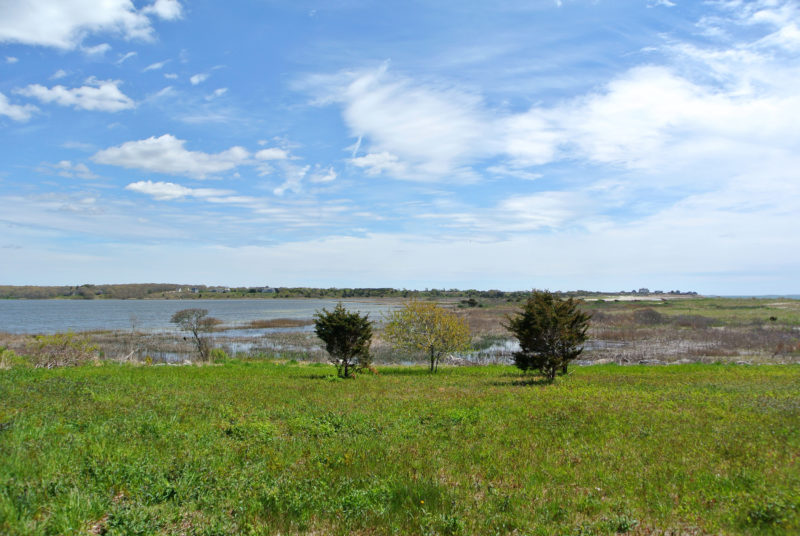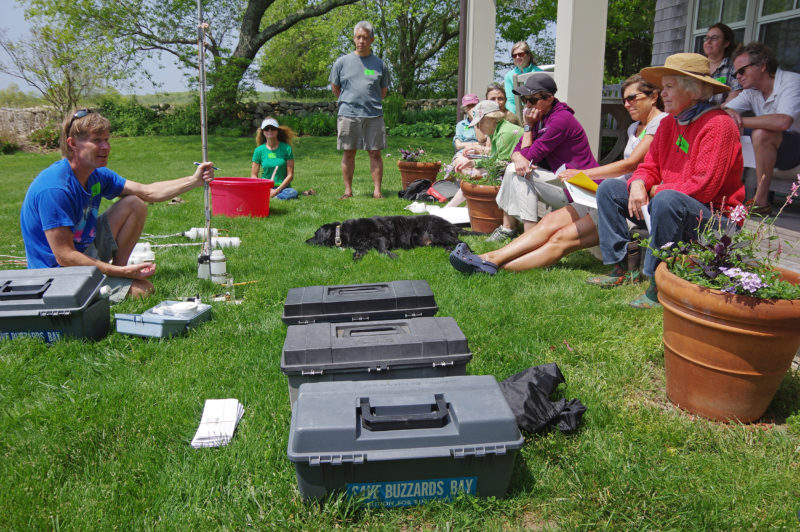The Coalition’s newest Baywatchers begin sampling in Quicksand Pond in Little Compton
In the quiet westernmost corner of the Buzzards Bay watershed in Rhode Island, local residents are teaming up with the Coalition to monitor the health of the Bay’s largest salt pond.

Goosewing Beach Preserve in Little Compton looks out over Quicksand Pond, Buzzards Bay’s largest salt pond.
On calm summer mornings, Pam Beck grabs her kayak, slips it into the protected waters of Little Compton’s Quicksand Pond, and paddles out to the sandy dunes of Goosewing Beach. Once there, she looks for piping plovers, walks the beach and takes in the beauty of this quiet little corner of Buzzards Bay. Tucked into the far southeastern edge of Rhode Island, Quicksand Pond is, as Beck describes it, “off the beaten path.”
It is also the largest natural salt pond on Buzzards Bay, according to Rachel Jakuba, science director with the Coalition. The pond, which spans 390 acres, is fed by two streams at the north end. At the southern end, there is a barrier beach that, most of the time, separates the pond from Buzzards Bay.
A few times each year, a storm breaks a channel through the beach, allowing salty Bay water to flow into the pond. But before long, sediment moving along the shore will close up the channel until the next storm comes through.
This natural disconnection and reconnection to Buzzards Bay creates a unique ecosystem in the pond that supports a range of marine and aquatic fish, as well as birds, amphibians, and mammals. Beck has even seen a pair of river otters pop their heads up while paddling on the pond with a friend.
Signs of trouble
The remote nature of Quicksand Pond has helped it escape many pollution problems over the years, but that might be changing. Beck and other concerned neighbors have noticed changes in the pond over the past few years, including blooms of aquatic plants that were never there before.
Are these changes the result of increased nitrogen pollution making its way into the pond? Or maybe water temperatures, which are increasing Bay-wide, are to blame. The neighbors wanted answers.
Becoming Baywatchers

Tony Williams, director of monitoring programs at the Coalition, trains volunteers to test the water quality of Quicksand Pond.
So Beck organized a team of volunteers and reached out to the Coalition to get trained as Baywatchers and help gather data on the health of Quicksand Pond. Working with Coalition staff, they identified six sampling locations around the pond, were outfitted with supplies, and received training by Tony Williams, the Coalition’s director of monitoring programs. Following the training, the group was excited and ready to go.
“The Buzzards Bay Coalition is great,” says Beck. “I love the rigorous approach and the high standards of the science they do. It will ensure that we get consistent results.”
Taking action for Quicksand Pond
As data comes in over the summer and gets reviewed over the next year, the volunteer sampling team and the Coalition, will start to get a picture of the health of Quicksand Pond. But Beck knows that’s just the beginning, and she is excited to have the help of the Coalition.
“With the Coalition, it’s not just about collecting data,” she says. “If they get information that demands action, they will act.”